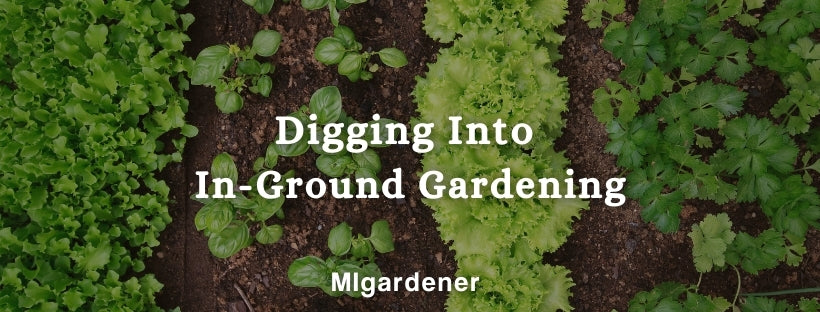
These In-Ground Gardening Methods Will Transform Your Soil
Last week we covered the beauty of raised bed garden. Raised beds have had their time in the spotlight recently, mainly because of their Instagramability. However, nothing beats the natural beauty of an in-ground garden design. Plus, a traditional in-ground garden can be just as productive as any other style. If you have space, but not the soil quality for an in-ground garden, you're in the right place. In this post, we will look at a few in-ground techniques to determine which are best for your space. Each will enrich the soil structure and add abundance to your harvest.
Let's get started!
Cons Of The In-Ground Method
There are a few downsides to inground gardening methods. Inground gardening is more of an intensive workout for the gardener because of its placement low on the ground. Some don't prefer the look of an in-ground garden in comparison to tidy raised beds. More tools for digging, combing, tilling, and weeding will be necessary with this technique. With any in-ground garden, it takes time to amend your soil. However, once you've done the work; it's all worth it. Tilling the soil can lead to a breakdown of soil structure, which can decrease the garden's water retention capabilities. However, all of these things are easily addressed with the tips below.
In-Ground Gardening Pros
In-ground gardens tend to be less expensive than raised beds, mainly because there is no additional cost for extra soil purchases. Perform a soil test to determine what kind of organic amendments your soil needs. Watering in a mix of compost and mulch is the best way to lead to an amazing harvest. Saving money on the soil will allow you to invest in good quality amenders if needed. In-ground gardens are less permanent than raised beds and can be replaced with another crop or moved to another location. You will save money on your water bill with this gardening technique! In-ground beds won't dry out as quickly as other gardening methods. Water retention is higher with in-ground beds, and irrigation systems are easier to place on flatbeds. Lastly, in-ground gardens can double as an inground root cellar. Many root vegetables can be stored in the ground in many zones until ready to eat.
In-Ground Gardening Methods
Two of the most popular in-ground gardening methods are the Lazy Gardener and Back To Eden methods. Both methods rely on a breakdown of varieties in each space and the protection that a deep mulch layer provides. Each method originated from the idea of working with nature instead of against it. These methods utilize every inch of the garden to grow something beneficial to prevent weeds from invading.
Ruth Stout's "Lazy Gardener" Method
Ruth Stout coined the lazy gardener method in the 1950s. Use a permanent mulch layer to improve the soil, eliminate weeds, and increase water retention to lead to a large harvest. Permanent mulch can be made of straw, hay, or even excess vegetables that would traditionally be put into the compost pile. This method brings constant nutrients to the garden without the threat of weeds. It is much less work than any other in-ground method. Lastly, because straw and hay are nitrogen deficient, be sure to balance out the nutrients with nitrogen-rich organic amendments. Grass clippings are a perfect addition. Be mindful that no pesticides or herbicides have been used on any grass added to the garden.
Paul Gautschi's Back to Eden Method
The "Back to Eden" method has been prevalent since its emergence in the 1980s. This philosophy of gardening focuses on imagining how nature would grow before human hands ever touched it. At the forest floor, Gautschi recognized the decomposing leaves, sticks, and foliage acting as a thick mulch layer for the rest of the ecosystem. This mulching system gave surrounding vegetation enough nutrients to thrive, which left no need for additional fertilizing. Using a thick layer of mulch to add to water retention in your garden will save many plants from the sun's direct heat. The Back to Eden method takes time to establish but yields amazing results for the harvest. Begin by adding a thick 4-5 inch layer of organic compost to your space. Begin layering decomposing material that will break down and feed your soil over time!
Conclusion
Having an inground garden makes it easier for you to utilize multiple gardening techniques to cater to the growing crops. Potato’s, for instance, thrive in a deep mulch layer! The deeper, the better! But greens, on the other hand, just need a small layer enough to suppress weeds. As you enrich the soil with these deep mulching techniques, your garden will thrive and the harvest will be abundant!
– Kaitlynn from MIgardener
Did you enjoy this post? MIgardener is passionate about sharing free gardening tips and information! If you are looking for inspiration in the garden, make sure to check out our Pinterest page. Check us out at MIgardener.com or on youtube, Instagram, and Facebook.




Leave a comment